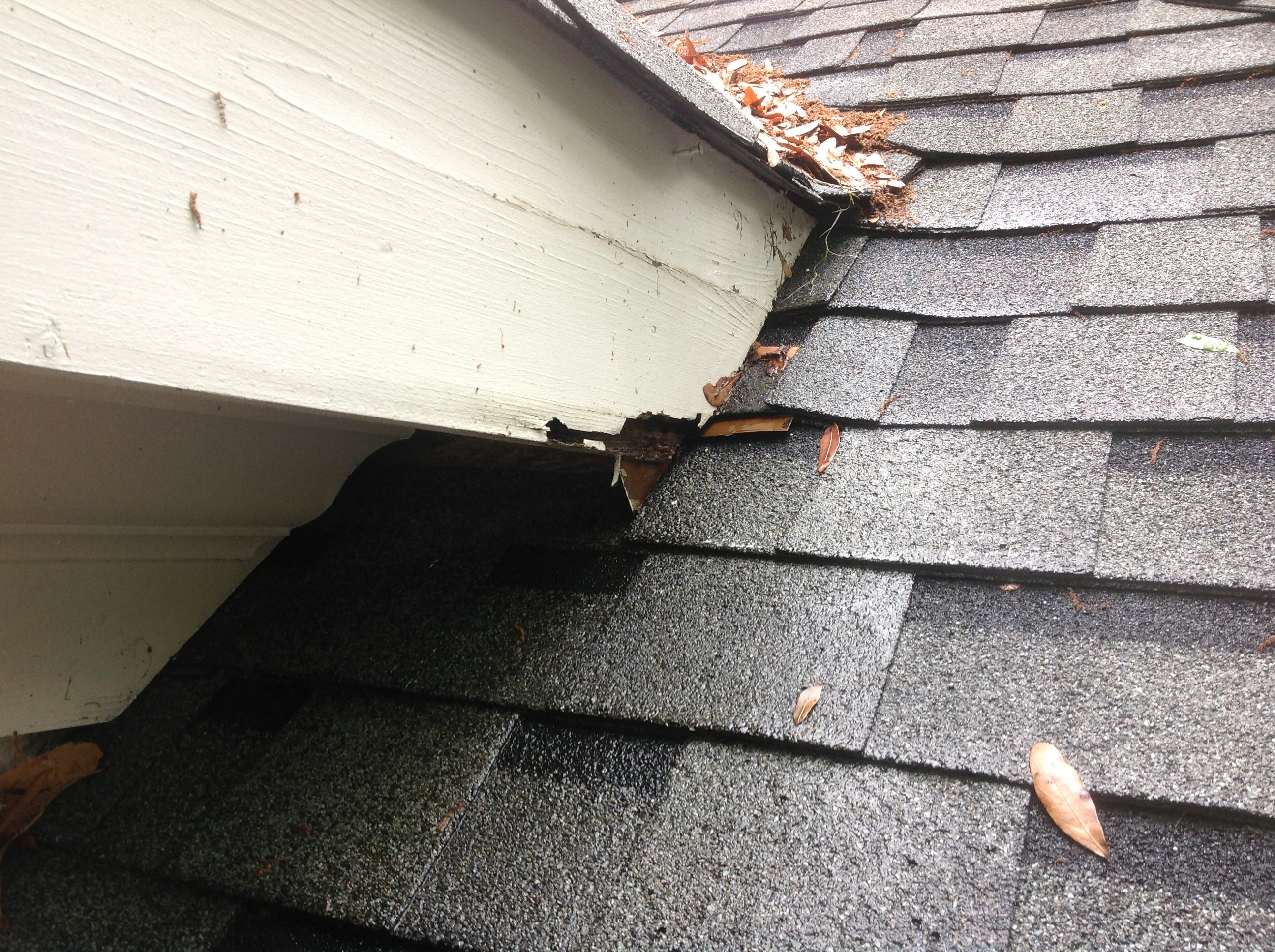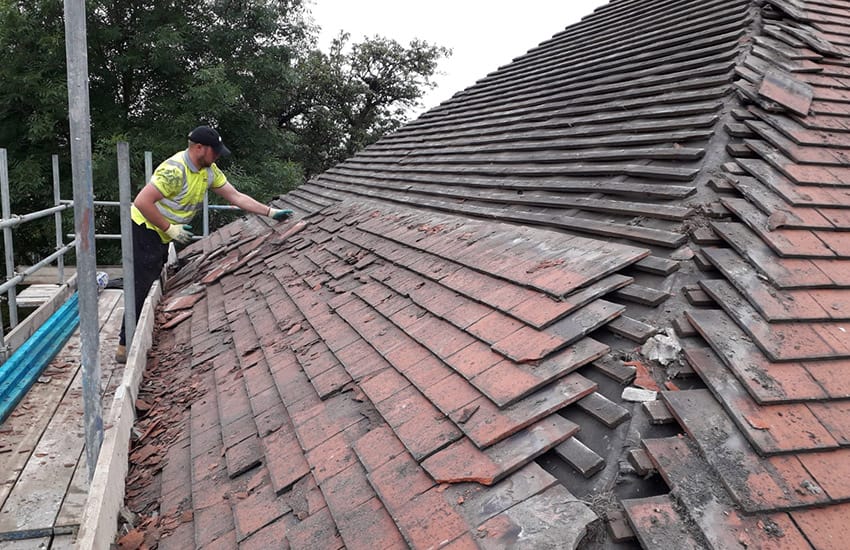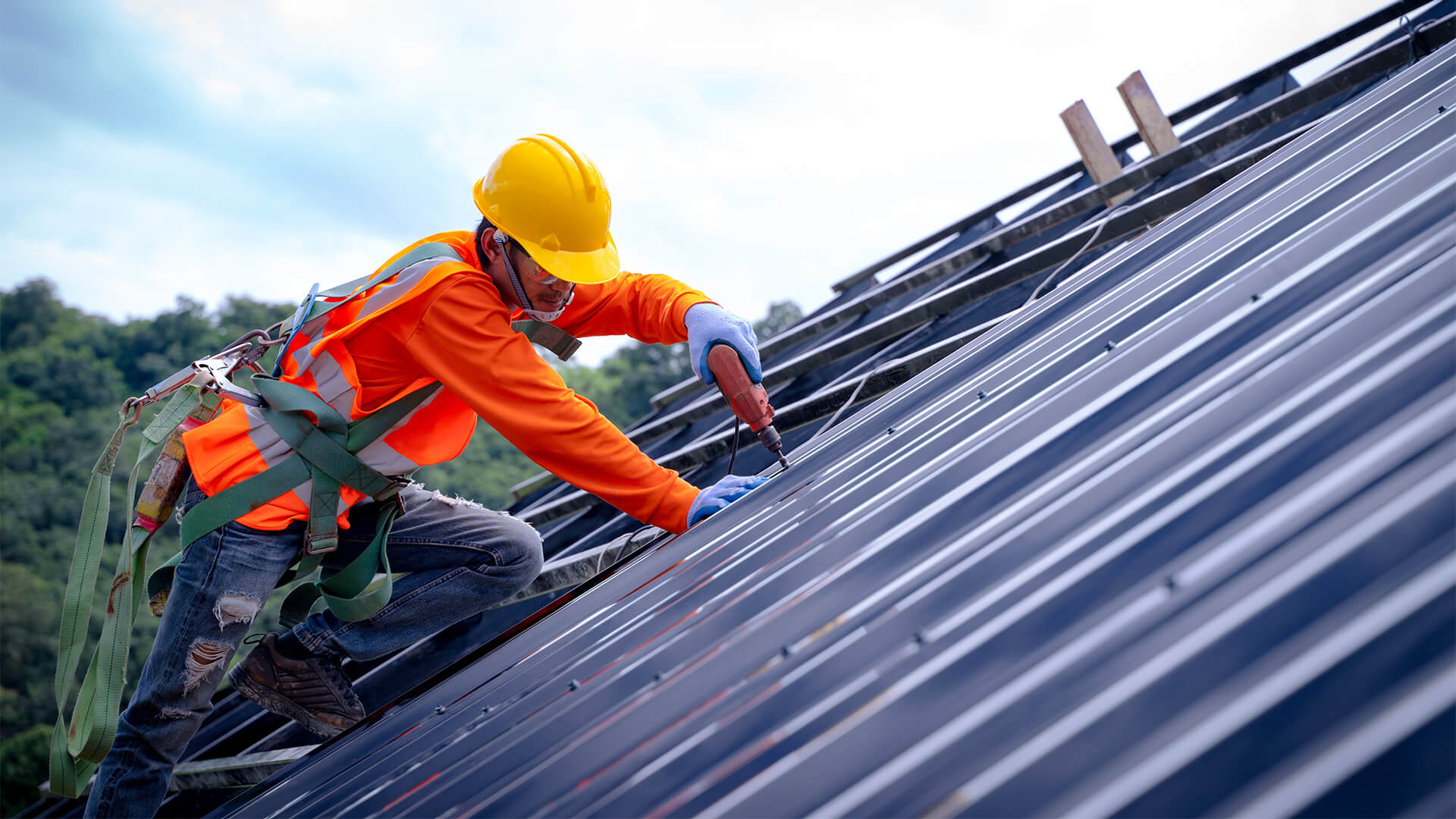A House owner's Guide to Types of Roofs: Picking the Right Style for Your Requirements

Popular Roofing System Styles
When it concerns choosing a roof covering style, home owners typically consider their alternatives very carefully to make sure both aesthetic charm and functionality. Amongst one of the most popular designs are the gable, hip, and flat roofings, each offering unique advantages and visual features.
Gable roofing systems, defined by their triangular form, are preferred for their basic layout and effective water drain. This style is especially well-suited for areas with heavy rains or snow, as it reduces the danger of water merging.
Hip roofs, which incline on all 4 sides, offer added stability and toughness, making them an outstanding choice for areas vulnerable to high winds. Their architectural complexity enables for greater layout versatility and can boost the overall aesthetic charm of a home.
Level roofing systems use a modern aesthetic and make the most of useful outdoor area, making them prominent for urban setups. While they call for more upkeep to prevent water build-up, their streamlined appearance can match modern design.
Ultimately, the selection of roof covering style need to show the house owner's personal preference while taking into consideration variables such as neighborhood environment, architectural style, and prospective resale value. Each design contributes distinctively to a home's overall character and performance.

Material Options
Selecting the ideal roofing system material is simply as essential as choosing the right design, as it dramatically impacts the roof covering's sturdiness, upkeep needs, and total aesthetic. roofers oahu. Property owners have a variety of alternatives to consider, each with one-of-a-kind advantages and disadvantages


Metal roofing provides remarkable toughness and longevity, usually exceeding 50 years, while additionally being immune and lightweight to fire and rot. Metal roof coverings can be more expensive upfront.
Clay and concrete ceramic tiles offer a classic appearance and outstanding life-span however require a strong structure because of their weight. These materials are immune and very durable to harsh weather. Wood shakes provide a rustic aesthetic however demand routine maintenance to stop rot and insect damages.
Lastly, synthetic roofing materials, such as rubber or plastic composites, simulate the appearance of conventional materials while being low-maintenance and light-weight. Eventually, the choice of roofing product must align with the homeowner's budget, preferred life expectancy, and upkeep preferences, making certain an appropriate suit for their specific needs.
Energy Effectiveness Factors To Consider
Energy effectiveness plays an essential role in the total performance of a roof, affecting both ecological sustainability and property owner energy expenses. When choosing a roofing, it is vital to take into consideration materials and designs that improve energy performance. For example, reflective roofing materials, typically described as "trendy roof coverings," can significantly reduce warmth absorption, decreasing interior temperature levels and lessening the requirement for cooling.
Additionally, the roof covering's shade and slope can influence its energy performance. Lighter colors typically mirror a lot more sunshine, while outstanding pitched roofings assist in better air movement, lowering warmth accumulation - roofers oahu. Insulation also plays a vital function; a well-insulated roofing system can prevent warmth loss in wintertime and keep insides cooler in summer, hence improving power cost savings
Furthermore, incorporating energy-efficient roof covering choices with solar panels can better reduce power expenses and reliance on nonrenewable resources. Homeowners need to likewise consider neighborhood environment conditions when picking roof products and designs, as these aspects directly impact energy intake.
Upkeep Demands
The durability and efficiency of a roof are substantially influenced by the upkeep needs connected with its design and products. Various roof covering types require differing degrees of upkeep, which can affect both the homeowner's time and budget plan.
Asphalt tiles, for circumstances, normally require annual assessments to look for deterioration, including broken or missing tiles. Normal cleansing of rain gutters is vital to avoid water damages and lengthen the roof's life expectancy. Metal roofing systems, while durable, still require regular checks for corrosion and sealant integrity. These roofing systems likewise profit from cleaning up to keep visual allure and functionality.
Ceramic tile roofs, known for their longevity, need less regular maintenance discover this info here but need cautious assessment and substitute of damaged tiles. Level roofing systems, although providing modern visual appeals, typically need even more interest; they need routine examination for merging water and debris removal to stay clear of leaks.
Ultimately, recognizing the maintenance demands connected with different roofing styles Your Domain Name enables house owners to make informed decisions, ensuring the picked roof covering system aligns with their lifestyle and commitment to upkeep. Focusing on upkeep will boost the roofing system's performance and expand its solution life, offering comfort for several years ahead.
Effect On Resale Value
When taking into consideration a brand-new roofing design, house owners ought to identify that the option can substantially affect the property's resale worth. A well-chosen roof not just improves curb appeal yet likewise indicates to possible purchasers that the home is well-kept and structurally noise. Various roof materials and styles carry differing levels of worth in the realty market.
As an example, asphalt roof shingles are prominent due to their cost and vast array of colors, commonly appealing to budget-conscious customers. Alternatively, a metal roof, while much more expensive in advance, provides long life and energy efficiency, which can attract customers trying to find reduced upkeep and sustainability. Additionally, distinct styles such as slate or ceramic tile can include a touch of luxury, potentially enhancing the home's value in high end markets.
Regional choices also play a crucial function; homes in areas with hefty snowfall may profit from steeply pitched roofings, while seaside regions might prefer resilient materials resistant to deep sea deterioration (roofers oahu). Eventually, home owners ought to consider both visual appeal and useful advantages when picking a roofing system. A thoughtful option ensures that the financial investment not just meets personal requirements but additionally improves recommended you read the building's bankability and resale potential
Final Thought
To conclude, choosing the ideal roofing style requires a cautious analysis of various factors, including regional environment, architectural style, and upkeep needs. Each roof covering choice, whether it be gable, hip, or flat, possesses distinctive advantages and drawbacks that influence power efficiency and prospective resale value. Eventually, a well-informed decision pertaining to roofing choice can boost the aesthetic allure, functionality, and longevity of a home, ensuring it stays a valuable property for several years to find.
Selecting the proper roof covering style for your home is an essential choice that can substantially influence both visual appeals and functionality. While gable roofing systems excel in water drain, hip roofings may supply higher resilience against wind.When taking into consideration a brand-new roofing design, house owners need to recognize that the choice can significantly affect the residential property's resale worth. Inevitably, house owners should think about both aesthetic allure and sensible advantages when selecting a roofing.In final thought, choosing the appropriate roof covering design requires a careful analysis of numerous elements, consisting of local climate, architectural style, and upkeep demands.